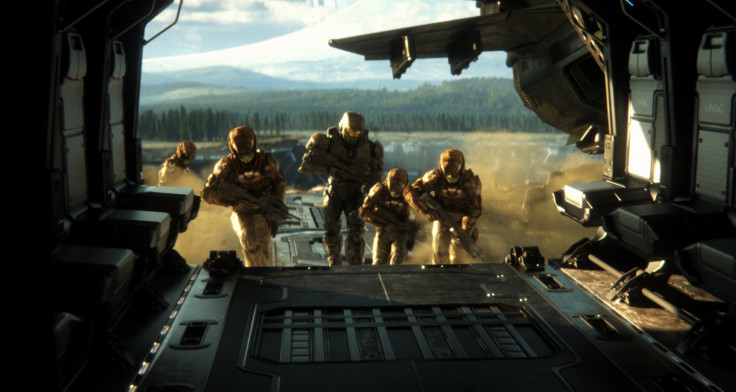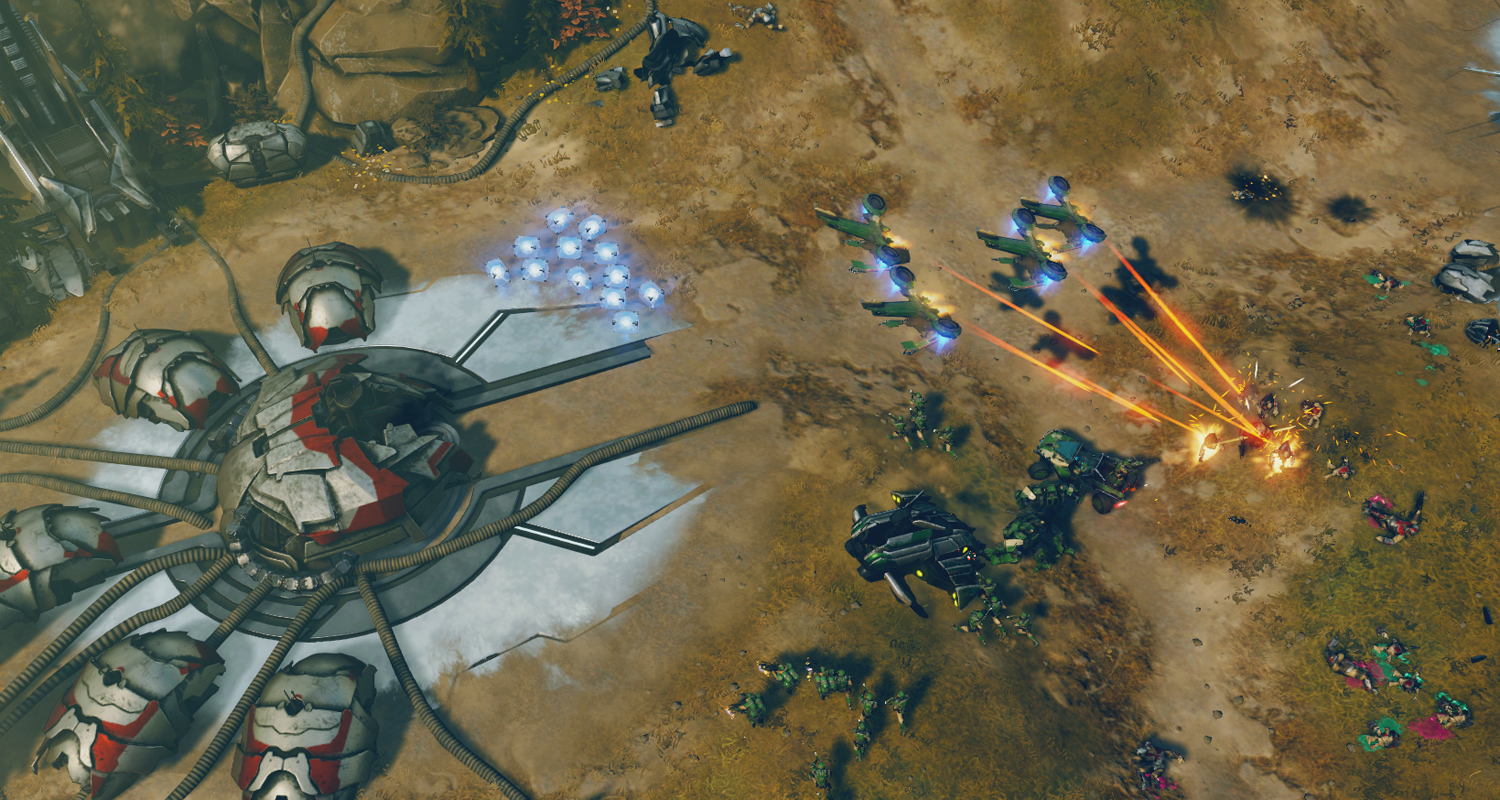Halo Wars 2 preview: Hands-on with Creative Assembly's new card-based Blitz multiplayer mode
Hands-on with the unexpected real-time strategy sequel on Xbox One and PC.

Did anyone see a Halo Wars sequel coming? When it was announced at Gamescom 2015, it came as a surprise, but a pleasant one. The 2009 original may not have been a monster hit, but it fared well with critics and became the most successful real-time strategy (RTS) game ever on consoles.
The genre has always struggled to find a home on consoles due to the method of control. The humble controller is simply not as able to meet the needs of players wishing to zip between multiple locations on a map as well as a mouse and keyboard can.
Halo Wars mitigated but didn't entirely remedy these issues, and the same can be said of this sequel – which, it should be added, is also heading to PC where none of this is even an issue.
RTS pioneers Creative Assembly is the team behind Halo Wars 2, and Microsoft couldn't have looked to a steadier set of hands. During a preview event in London, IBTimes UK sat down for a few hours with the game's campaign, its traditional multiplayer and new Blitz multiplayer mode – the most refreshing and innovative aspect of Halo Wars 2.
In the recent years using cards as a game-mechanic has become commonplace in the wake of Fifa Ultimate Team's enormous success. The aim is to utilise aspects of card-collecting to create modes of play that encourage players to spend real-world money on card packs.
In games like Rise of the Tomb Raider and Halo 5: Guardians, card-based elements seemed crow-barred in despite proving not to be the cynical cash-grabs many feared. In Halo Wars 2, Blitz's card element makes sense, and even feels organic, but it's not a mode for RTS purists.
Blitz is built around collecting cards and building decks for use in short battles between teams of up to three players. Each deck starts with its own set units, with the rest of the cards in a deck representing units that cost varying amounts of energy to deploy depending on their power. These units can be deployed from a hand of four anywhere not obscured by the fog of war effect.
The first team to reach 200 points wins. These points are accumulated through holding any of the three points on the map, with energy-dispensing capsules dropping at random around the map to keep things flowing. It's fast-paced and fun, with our five matches hinting at a depth of strategic possibilities that isn't immediately obvious.
Each game of Blitz lasted roughly five minutes, while our match in the traditional multiplayer mode lasted more than an hour. This epic battle was, again, a three-on-three match and was the best test of the game's broader RTS mechanics. We'll return to that later.



At the start of our time with Halo Wars 2, we played a new campaign mission (mission three: Ascension) which proved a good introduction to the mechanics. Starting as a small force working its way up to a main area, players engage in small skirmishes selecting units individually or within a circular selection area created by holding down the A button. When a group of units is selected (players can also select all nearby units with the bumper) the trigger allows the selection of a group of specific unit types. If you want to select a smaller force made up of different units, that'll require more work as you shuffle the positioning of units on the map.
The bulk of the mission tasks us with capturing/destroying three enemy-held spots on the map, but to do so we need more than the handful of damaged Warthogs we started with and a Spartan with a limp.
Bases are built on specific plots left bare or housing enemy bases you first need to destroy. After this you get to add three additional buildings offering different units (a garage, airpad, barracks) or generating the energy and power needed to build and deploy. Each building, as well as the base as a whole, can be upgraded, allowing more buildings to be grafted on and more units to be created.
Successful skirmishes and defences reap rewards that unlock leadership abilities. These offer boosts and can heal, for example. One power allows the player to briefly commandeer enemy units.
In multiplayer the pressures of the game quickly become clear. The need to build, upgrade and deploy quickly is apparent, not least to defend your own bases. Defending alone won't win the battle however. Players need to push on and establish new bases and generate more resources, but each base represents a new plate in need of spinning, and spreads forces thinner.
A player's forces are limited by a set amount of personnel, differing chunks of which are taken up by bigger, deadlier war machines. Striking a balance is key. If you want to build two enormous, deadly Condors or a Scarab, that'll reduce number the supporting units you can deploy.
Over the course of the hour-long game it at times felt like a war of attrition, at others an exercise in establishing and re-establishing an army as enemy attacks whittle our forces down. When our team was finally on the front-foot, however, we could finally start thinking about proper strategies and teamwork.
Striking through the middle to split the enemy forces, then moving round from the right from a base of ours which hadn't been attacked once, victory was nearing. Our opponents, who had attacked us multiple times before we retaliated with force, were taken aback, and it wasn't long before their final base fell.
Halo Wars 2 is as confident as you'd expect from Creative Assembly. This isn't shaping up to be the console RTS that finally makes the genre work flawlessly with a controller, but it's capable, fun and Blitz mode certainly has potential. Whether it can strike in quite the way Microsoft and CA hope, remains to be seen.
Halo Wars 2 will release on Xbox One and Windows 10 PCs on 21 February. An online beta for Blitz mode begins on 20 January.
For all the latest video game news follow us on Twitter @IBTGamesUK.
© Copyright IBTimes 2024. All rights reserved.






